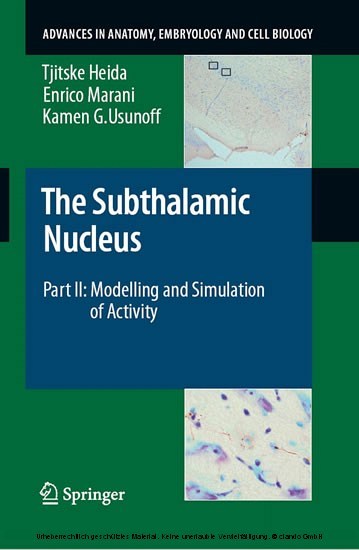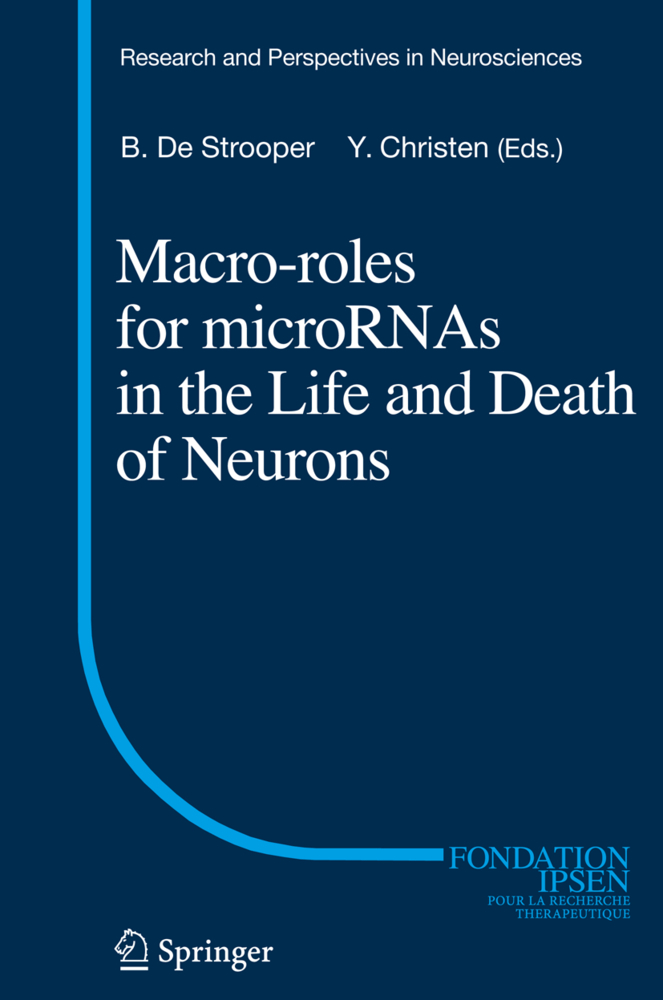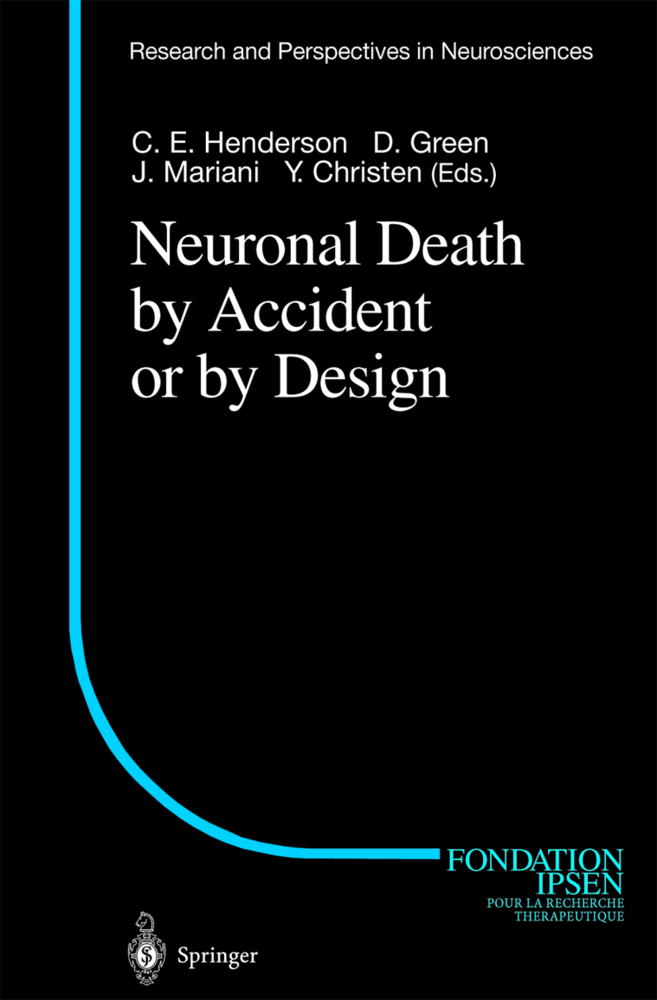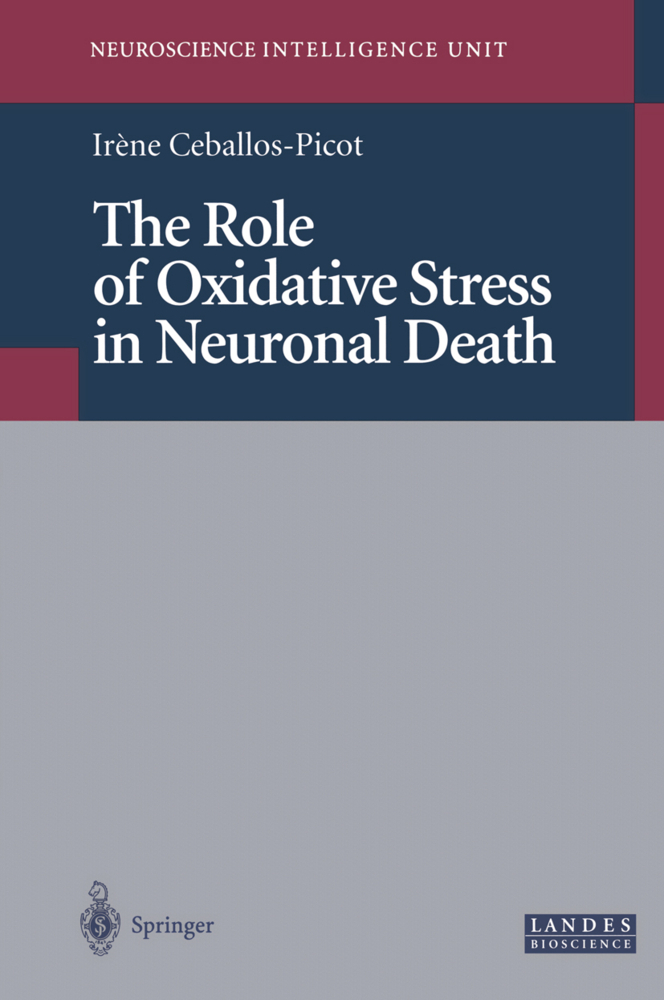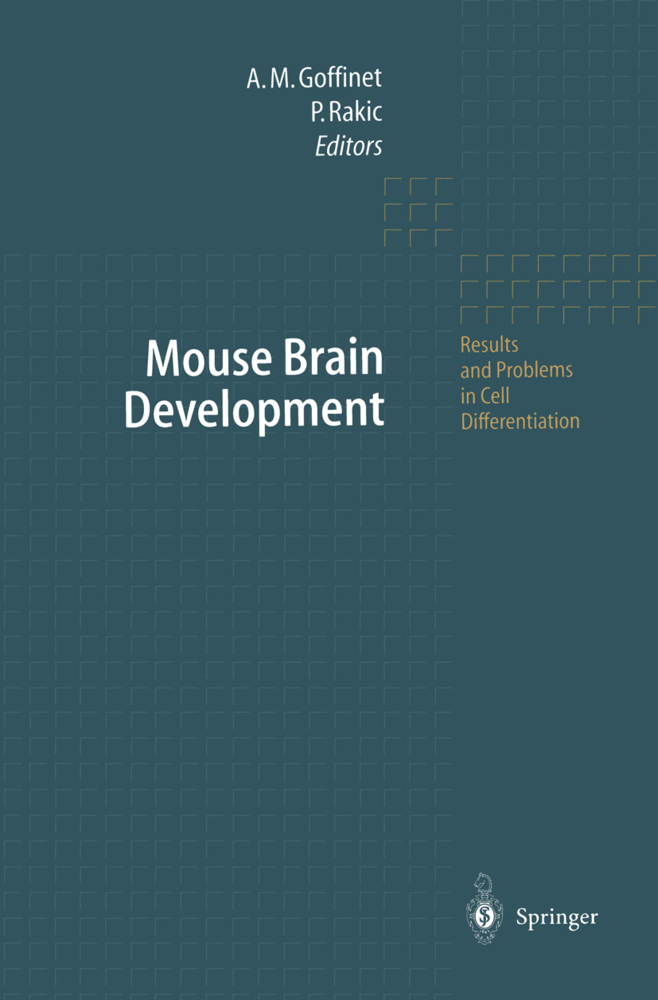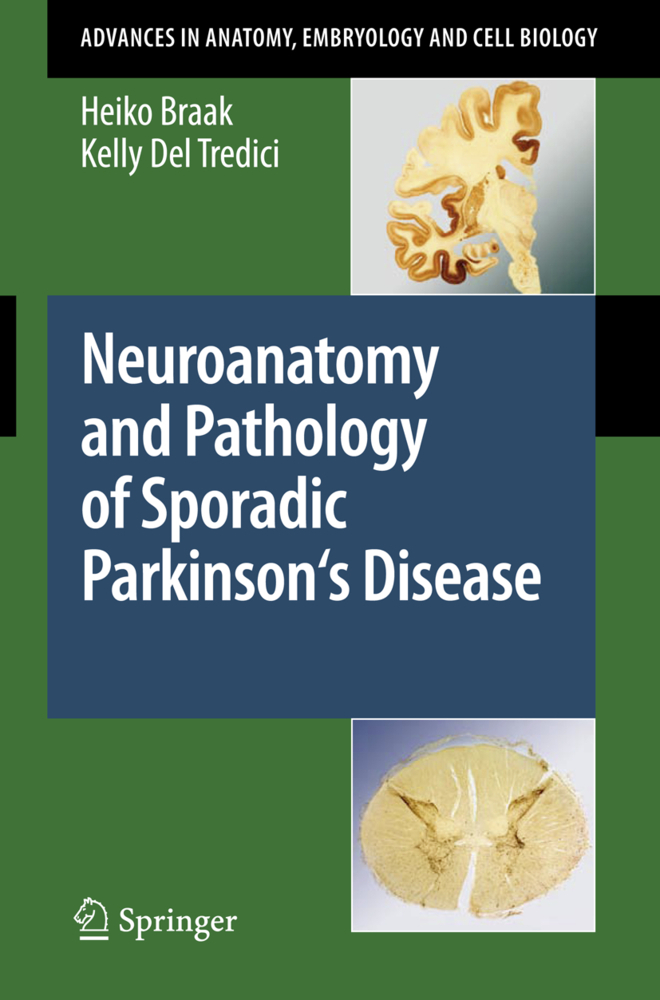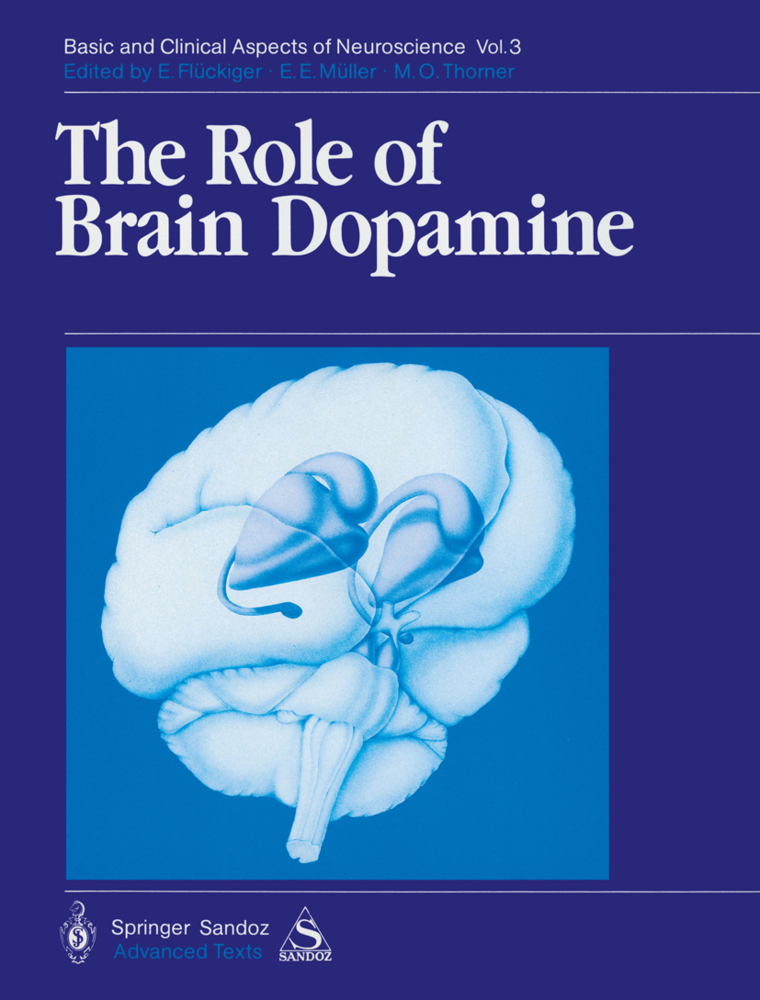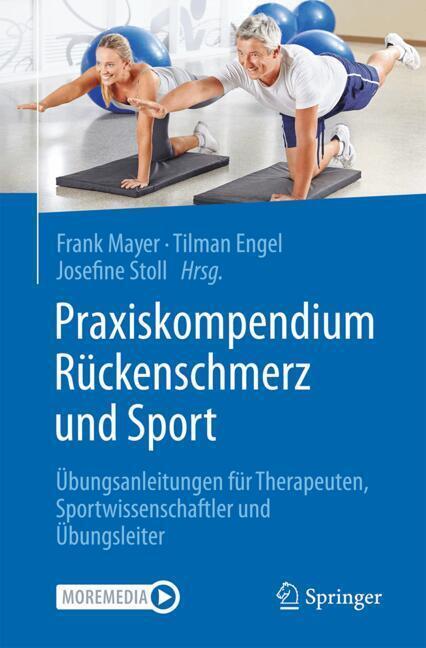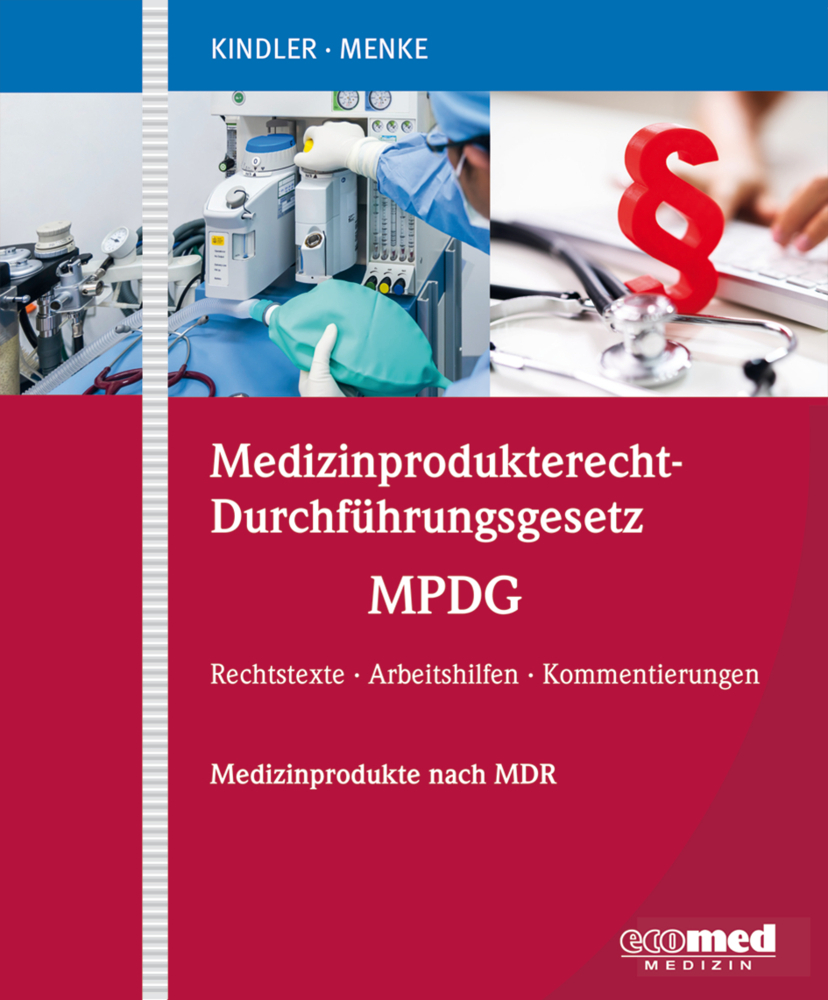The Subthalamic Nucleus. Pt.2
Part II: Modelling and Simulation of Activity
This monograph gives an overview of the STN. It treats the position of the STN in hemiballism, based on older and recent data. The cytology encompasses the neuronal types present in the STN in nearly all studied species and focuses on interneurons and the extent of their dendrites. Ultrastructural features are described for cat and baboon (F1, F2, Sr, LR1, LR2 boutons and d.c.v. terminals, together with vesicle containing dendrites), the cytochemistry is focused on receptors (dopamine, cannabinoid, opioid, glutamate, GABA, serotonin, and cholinergic-, purinergic ones) and calcium binding proteins and calcium channels. The development of the subthalamic nucleus from the subthalamic cell cord is given together with its developing connections. The topography of rat, cat, baboon and man is worked out as to cytology, sagittal borders, surrounding nuclei and tracts, and aging of the human STN. The connections of the STN are extensively elaborated on: cortical-, subthalamo-cortical-, pallidosubthalamic-, pedunculopontine-, raphe-, thalamic-, central grey-, and nigral connections. Emphasis is put on human connections. Recent nigro-subthalamic studies showed a contralateral projection. The role of the STN in the basal ganglia circuitry is described as to the direct, indirect and hyperdirect pathway. The change the STN undergoes in Parkinson s disease in neuronal firing rate and firing pattern is demonstrated together with the possible mechanisms of deep brain stimulation. The results of in vitro measurements on dissociated cultured subthalamic neurons are presented. The preliminary effects of application of acetylcholine and high frequency stimulation are described. This part is preceded with studies concerning spontaneous activity, depolarizing and hyperpolarizing inputs, synaptic inputs, high frequency stimulation, and burst activity of STN cells. The last extensive part concerns STN cell models and simulation of neuronal networks. Single cell models (model of Otsuka and Terman/Rubin) are compared and the multi-compartment model of Gillies and Willshaw is explored. The globus pallidus externus-STN network as proposed by Terman is briefly described. The monograph finishes with a series of interpretations of the results.
1;List of Contents;6 2;Abstract;8 3;Abbreviations;9 4;1 Introduction;15 5;2 The Basal Ganglia;15 5.1;2.1 Pathways Within the Basal Ganglia;16 5.1.1;2.1.1 Direct Pathway;16 5.1.2;2.1.2 Indirect Pathway;16 5.1.3;2.1.3 Hyperdirect Pathway;18 5.1.4;2.1.4 Roleof the Direct, Indirect, and Hyperdirect Pathways;18 5.1.5;2.1.5 Roleof Dopamine in the Direct and Indirect Pathways;20 5.1.6;2.1.6 Conduction Times of Pathways;20 5.2;2.2 Parkinson's Disease;20 5.2.1;2.2.1 Direct and Indirect Pathways in PD;21 5.2.2;2.2.2 Changes in Neuronal Firing Rate in PD;22 5.2.3;2.2.3 Changes in Neuronal Firing Pattern in PD;23 5.3;2.3 Deep Brain Stimulation;23 5.3.1;2.3.1 Which Neuronal Elements Are Influenced by DBS?;25 5.3.2;2.3.2 Mechanisms of DBS: Hypotheses;25 6;3 STN Activity Recorded in Vitro: Brain Slices;28 6.1;3.1 Spontaneous Activity;29 6.1.1;3.1.1 Single-Spike Mode;29 6.1.2;3.1.2 Burst-Firing Mode;31 6.2;3.2 Depolarizing and Hyperpolarizing Inputs;33 6.2.1;3.2.1 Plateau Potential;35 6.2.2;3.2.2 Low-Threshold Spike;36 6.3;3.3 Ionic Mechanisms of a Plateau Potential;37 6.4;3.4 Synaptic Inputs;39 6.5;3.5 High-Frequency Stimulation of STN Cells;40 6.6;3.6 Intrinsic Versus Extrinsic Properties: Bursts;41 6.6.1;3.6.1 Definition of Bursts;41 6.6.2;3.6.2 Burst Detection Algorithms;42 6.6.3;3.6.3 Network Bursts Using Burst and Phase Profiles;44 7;4 STN Activity Recorded in Vitro: Dissociated Cell Cultures;45 7.1;4.1 Experimental Set-up;45 7.1.1;4.1.1 Cell Culture;47 7.1.2;4.1.2 Measurement Set-up;47 7.2;4.2 Spontaneous Activity;47 7.3;4.3 Addition of Acetylcholine;49 7.4;4.4 Electrical Stimulation;51 8;5 STN Cell Models and Simulation of Neuronal Networks;54 8.1;5.1 Otsuka's Model;54 8.1.1;5.1.1 Membrane Dynamics;55 8.1.2;5.1.2 Spontaneous Activity;57 8.1.3;5.1.3 Plateau Potential Generation;59 8.2;5.2 Terman and Rubin's Model;66 8.2.1;5.2.1 Membrane Dynamics;66 8.2.2;5.2.2 Spontaneous Activity;67 8.2.3;5.2.3 Rebound Bursts;70 8.3;5.3 Comparison of the Otsuka Model with the Terman/Rubin Model;72 8.4;5.4 The Multi-compartment STN Model of Gillies and Willshaw;77 8.4.1;5.4.1 Membrane Dynamics;77 8.4.2;5.4.2 Activity Patterns;78 8.5;5.5 Intra-nuclear Network Models;80 8.6;5.6 Inter-nuclear Network Models;81 8.6.1;5.6.1 GPe- STN Network;81 8.6.2;5.6.2 GPe- STN-GPi-Thalamus Network;85 9;6 Comparison of Part I and Part II;89 9.1;6.1 Recurrent STN Axons;89 9.2;6.2 Inter-neurons in the STN;89 9.3;6.3 Fibre Tracts around and in the STN;89 9.4;6.4 Ca2-Receptors;90 9.5;6.5 Three-Dimensional Modelling;90 9.6;6.6 Types of Projection Neurons;90 9.7;6.7 Neurotransmitter Input Versus Receptors in the STN;91 9.8;6.8 The Pedunculopontine Nucleus;91 9.9;6.9 Nigro-subthalamic Connections;91 9.10;6.10 Another Cortico-subthalamic Loop;92 9.11;6.11 Nissl-Based Subdivision of the STN;92 10;References;95 11;Index;101
Heida, Tjitske
Marani, Enrico
Usunoff, Kamen G.
| ISBN | 9783540794622 |
|---|---|
| Artikelnummer | 9783540794622 |
| Medientyp | E-Book - PDF |
| Auflage | 2. Aufl. |
| Copyrightjahr | 2008 |
| Verlag | Springer-Verlag |
| Umfang | 88 Seiten |
| Sprache | Englisch |
| Kopierschutz | Digitales Wasserzeichen |

